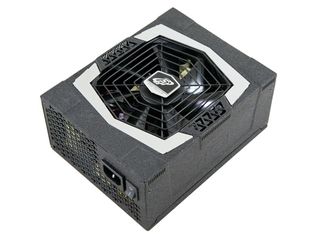FSP Aurum PT 1000W Power Supply Review
FSP's Aurum PT series PSUs are 80 PLUS Platinum-certified and fully modular. Today we will take a look at the series' 1000W mid-level unit.
Why you can trust Tom's Hardware
Conclusion
FSP managed to make a strong entry into the high-end PSU category with its PT-1000FM, which is based on a good platform that offers everything that its competitors (Seasonic and Super Flower) do. While we were used to seeing products from FSP in the low- and mid-end categories, it seems the company decided to go big as well with the Aurum Platinum series, which currently consists of three units with capacities ranging from 850 to 1200W. Judging from the capacity range of the Aurum PT units, we can easily see they mostly address PC enthusiasts, rather than regular users.
The PT-1000FM we tested achieved overall tight load regulation, along with excellent ripple suppression on all rails except 5VSB, which still was around the middle of the ATX spec's limit. In the noise output section, under normal conditions, the PSU will work silently throughout most of its operating range. However, we believe that, in this case, a semi-passive fan mode would limit noise at low and mid loads. If FSP didn't want to add passive operation, the company should have at least lowered the fan's speed at light loads. After all, this is a highly efficient PSU—in fact, it's currently among the most efficient Platinum-rated units, at least with normal loads—so heat dissipation is low.

FSP did a great job with the PT-1000FM, and if the company had used higher-capacity bulk caps, then the only significant problem I discovered—less-than 16ms holdup time—wouldn't have cost this product points, allowing it to achieve an even better place in the corresponding performance graph. I should stress, though, that the PSU failed only for a couple of milliseconds to reach the minimum AC loss to PWR_OK holdup time that the ATX spec demands. While this is still a shortcoming, it's not as far behind as some other PSUs with registered holdup times at dangerously low levels. A PSU's holdup time can be crucial for a system, since a PSU with a low corresponding time during a sudden power loss might not offer enough time for the SSD to transfer data from its DRAM cache to the flash memory, losing information.
To wrap up, FSP's offering in the high-end 1kW space easily goes head to head with products from Seasonic and Super Flower that currently dominate the market. Plus, it's reasonably priced, given its performance and features. If it had a semi-passive mode, a full set of stealth and flat cables and a slightly longer holdup time, it would be almost perfect. In the next revision of this unit, FSP should consider fixing the issues I pointed out in this review, in order to make this fine PSU even better.
MORE: How We Test Power Supplies MORE:
Who's Who In Power Supplies, 2014: Brands Vs. Manufacturers MORE:
Power Supplies in the Forums
Aris Mpitziopoulos is a Contributing Editor for Tom's Hardware, covering Power Supplies.
Follow us on Twitter @tomshardware, on Facebook and on Google+.
Current page: Conclusion
Prev Page Performance, Performance Per Dollar And Noise RatingsStay on the Cutting Edge
Join the experts who read Tom's Hardware for the inside track on enthusiast PC tech news — and have for over 25 years. We'll send breaking news and in-depth reviews of CPUs, GPUs, AI, maker hardware and more straight to your inbox.
Aris Mpitziopoulos is a Contributing Editor at Tom's Hardware US, covering PSUs.
-
Giannis Karagiannis Just ordered one! Very comprehensive review! It is a bit strange that thanks to your recent articles I can choose a power supply with much greater confidence than a CPU or VGA. Keep up the good work!Reply -
Vosgy ReplyJust ordered one! Very comprehensive review! It is a bit strange that thanks to your recent articles I can choose a power supply with much greater confidence than a CPU or VGA. Keep up the good work!
Man haven't seen anyone call them Video Graphics Accelerators in years, kudos to you good sir. -
Covaylent Nice work, Aris, as usual.Reply
Would you mind commenting on the infrared images? Some of those hotspots seem quite hot - am I just reading the images incorrectly? -
Aris_Mp Indeed some hotspots are very hot since I usually take this shots with the PSU operating at very high ambient temperatures. Some parts inside the PSU may operate at up to 100C under such conditions.Reply
